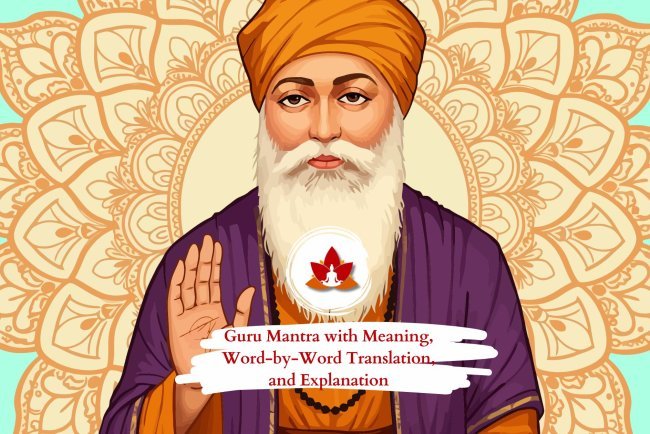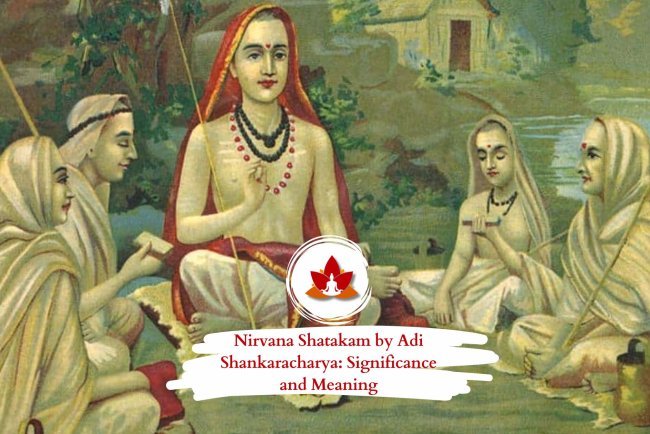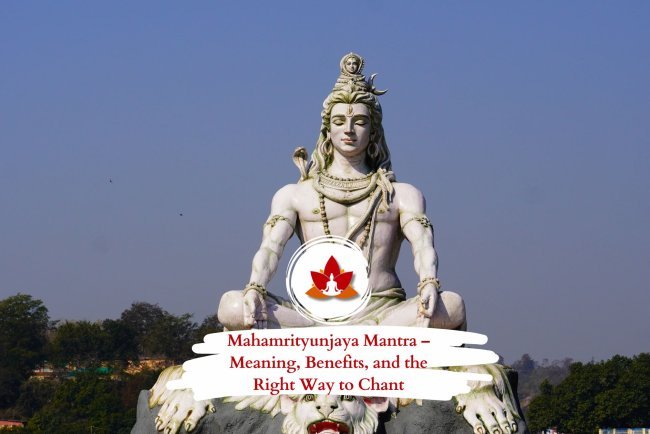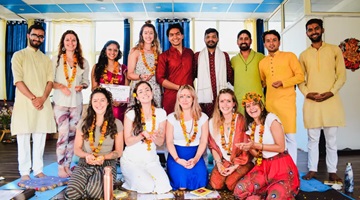Ashtanga Yoga Opening and Closing Mantras: Meaning, Translation & Benefits
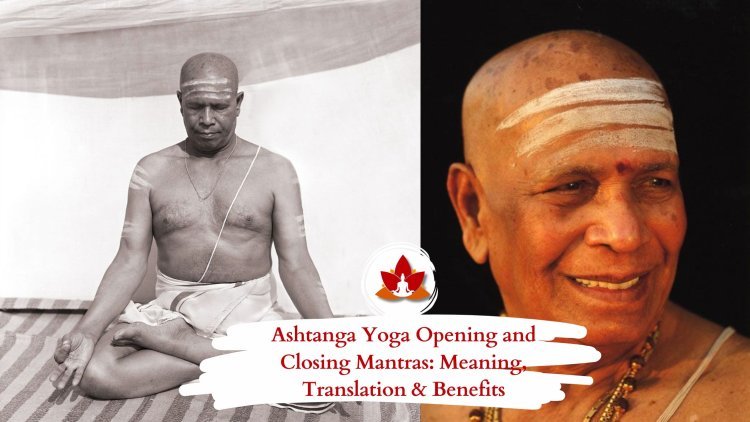
Deeply rooted in tradition, Ashtanga Yoga begins and ends with sacred mantras that honor its lineage and purpose. The Opening Mantra invites divine blessings, protection, and guidance from the ancient sages, while the Closing Mantra radiates peace, compassion, and well-being to all beings. Together, they encapsulate the spiritual heart of yoga—reminding practitioners that this path extends far beyond the physical, leading toward inner transformation and spiritual awakening.
Historical and Vedic Origins
The Ashtanga Yoga mantras trace their roots to the Vedic scriptures, drawn from timeless Sanskrit prayers. The Opening Mantra venerates the Guru—the one who dispels darkness—linking the practitioner to an unbroken lineage of wisdom that reaches back to Patanjali, the father of classical yoga. The Closing Mantra echoes the universal call for peace found in the Upanishads, expressing goodwill, health, and liberation for all beings.
Traditionally, these mantras were chanted to cultivate humility and gratitude before beginning practice and to seal the session with devotion and compassion upon completion. Even today, Ashtanga practitioners around the world uphold this sacred ritual, continuing the legacy of Sri K. Pattabhi Jois, who revived and shared this transformative practice with the modern world.
The Ashtanga Yoga Opening Mantra
Devanagari Script
ॐ
वन्दे गुरूणां चरणारविन्दे
सन्दर्शित स्वात्म सुखावबोधे।
निःश्रेयसे जाङ्गलिकायमाने
संसार हालाहल मोह शान्त्यै ॥
आबाहु पुरुषाकारं
शङ्ख चक्रासि धारिणम् ।
सहस्र शिरसं श्वेतं
प्रणमामि पतञ्जलिम् ॥
ॐ
Transliteration
Om
Vande gurunam charanaravinde
Sandarshita svatma sukhavabodhe
Nihsreyase jangalikayamane
Samsara halahala moha shantyai
Abahu purusakaram
Sankha chakra asi dharinam
Sahasra sirasam svetam
Pranamami Patanjalim
Om
Meaning (Line by Line)
Vande gurunam charanaravinde — I bow at the lotus feet of all my teachers.
Sandarshita svatma sukhavabodhe — Who awaken the inner joy of self-realization.
Nihsreyase jangalikayamane — Who act as healers in the wild forest of worldly existence.
Samsara halahala moha shantyai — Who bring peace by calming the poison of delusion and suffering.
Abahu purusakaram — To the one who has a human form up to the arms.
Sankha chakra asi dharinam — Who holds the conch, discus, and sword.
Sahasra sirasam svetam — The thousand-headed, radiant, and white being.
Pranamami Patanjalim — I bow with reverence to Sage Patanjali.
Essence of the Mantra
The Ashtanga Opening Mantra is a sacred invocation of gratitude and reverence. It honors all teachers who guide us from ignorance to self-realization and pays homage to Sage Patanjali, the revered author of the Yoga Sutras.
Through this mantra, practitioners align their minds with humility, devotion, and the timeless wisdom of yoga—transforming the physical practice into a journey of spiritual awakening and inner peace.
The Ashtanga Yoga Closing Mantra
Devanagari Script
स्वस्तिप्रजाभ्यः परिपालयन्तां
न्यायेन मार्गेण महीं महीशाः ।
गोब्राह्मणेभ्यः शुभमस्तु नित्यं
लोकाः समस्ताः सुखिनो भवन्तु ॥
ॐ शान्तिः शान्तिः शान्तिः ।
Transliteration
Svasti prajabhyah paripalayantam
Nyayena margena mahim mahishah
Gobrahmanebhyah shubham astu nityam
Lokah samastah sukhino bhavantu
Om Shanti Shanti Shanti
Meaning (Line by Line)
Svasti prajabhyah paripalayantam — May all people be protected and blessed with well-being.
Nyayena margena mahim mahishah — May the leaders of the earth rule with righteousness and justice.
Gobrahmanebhyah shubham astu nityam — May the sacred beings—cows and spiritual teachers—always receive blessings.
Lokah samastah sukhino bhavantu — May all beings everywhere be happy, peaceful, and free.
Om Shanti Shanti Shantih — Om, peace, peace, peace.
Essence of the Mantra
The Ashtanga Closing Mantra is a heartfelt prayer of gratitude and universal goodwill. It reminds practitioners that yoga is not just a personal pursuit but a contribution to global harmony. By chanting it, we extend the peace cultivated within ourselves to every corner of the world—blessing all beings with compassion, balance, and serenity.
Rooted in Vedic tradition, this mantra beautifully concludes the Ashtanga practice by offering a vibration of love, justice, and peace—a reminder that the true purpose of yoga is unity and the upliftment of all.
Significance of the Mantras
Opening Invocation:
The opening mantra grounds the practitioner and turns awareness inward, creating a sacred space for growth and transformation. By honoring Sage Patanjali and the lineage of teachers, it reminds us that yoga is not merely a physical discipline but a profound journey toward wisdom, self-realization, and liberation.
Closing Invocation:
The closing mantra releases the energy cultivated during practice and directs it outward as compassion and peace. It serves as a gentle reminder that the true essence of yoga lies in service, love, and harmony with all beings.
Together, these sacred chants elevate Ashtanga Yoga beyond the realm of physical movement, turning it into a complete spiritual practice—one that nurtures inner purity and contributes to the well-being of the entire universe.
Advantages of Chanting the Mantras
Mental Clarity and Focus — Chanting the mantra before practice quiets the mind, sharpens concentration, and sets a clear intention for the session.
Emotional Balance — It helps release fear, anxiety, and ego, allowing practitioners to cultivate gratitude and inner steadiness.
Spiritual Connection — The vibration of sound bridges the physical and spiritual dimensions, deepening awareness of yoga’s sacred roots.
Sense of Community — When chanted in a group, the collective energy fosters unity, mutual respect, and shared devotion.
Inner Peace and Compassion — Closing with universal prayers extends the practice beyond the self, radiating peace and goodwill to all beings.
How to Chant Properly
Best Time: Chant at the beginning and end of your practice with sincerity and mindful presence.
Posture: Sit or kneel comfortably with your spine tall and palms joined at the heart center.
Breath and Voice: Chant slowly and rhythmically, feeling the vibration of each syllable and reflecting on its meaning.
Repetition: Traditionally, the mantras are chanted once, but gentle repetition can deepen your personal experience.
Common Misconceptions
Not Exclusive to Hindus: These mantras are universal prayers that transcend religion, inviting peace and awareness for all.
Not Mere Rituals: They serve as tools for mindfulness, gratitude, and respect—not just ceremonial acts.
Not About Perfection: The sincerity of the heart matters far more than perfect pronunciation.
Ashtanga Yoga Mantras in the Modern World
Across yoga studios around the globe, practitioners continue to chant these sacred mantras to honor the roots of Ashtanga Yoga while embracing their own unique journeys. In today’s fast-paced world, these invocations serve as gentle reminders that yoga is far more than physical flexibility—it is a path of wisdom, humility, and compassion.
By chanting, students bridge ancient tradition with modern practice, carrying forward the timeless essence of yoga: the union of body, mind, and spirit in the pursuit of inner harmony and self-awareness.
Conclusion
The Ashtanga Yoga Opening and Closing Mantras beautifully weave together gratitude, devotion, and compassion. They serve as sacred companions to the physical practice—invoking divine wisdom at the beginning and spreading peace and goodwill at the end. Through these mantras, the yoga mat becomes a sanctified space where body, mind, and spirit unite in harmony.
(FAQs)
1. What is the purpose of chanting mantras before and after Ashtanga Yoga practice?
Chanting the mantras transforms yoga into a holistic spiritual journey. The opening mantra sets a sacred intention, fosters gratitude toward the teachers, and the closing mantra extends peace and compassion to all beings.
2. Can I chant the Ashtanga Yoga mantras even if I’m not religious?
Absolutely. These are universal prayers open to everyone seeking clarity, peace, and spiritual connection—not bound to any specific religion or belief system.
3. In what language are the Ashtanga Mantras?
The mantras are in Sanskrit, the ancient and revered language of India. English transliterations and translations make them accessible for practitioners worldwide.
4. Can I chant the mantras silently instead of aloud?
Yes. Silent chanting, when done with focus and devotion, is equally powerful. What truly matters is the intention and awareness behind your practice.
What's Your Reaction?







